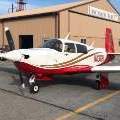Minimum Cloud Ceiling to Launch VFR for Aerial IFR Pick Up (poll)
Ceiling for VFR to pick up IFR in the air
48 members have voted
-
Members Online
- christaylor302
- P320
- Bunti
- rklems
- eman1200
- atpdave
- Jim Peace
- SoccerCA
- bradcarr
- Ivan
- dkkim73
- Rick Junkin
- Aerodon
- PeterRus
- Jackk
- BlueDun
- ericrynehess
- NicholasM20
- Jerry 5TJ
- Bolter
- EricJ
- Aaviationist
- redbaron1982
- Trogdor
- Skates97
- Vulcan81
- Cfidave
- ta2too
- varlajo
- Flyler
- 00-Negative
- 1967 427
- Old Chub
- FlyingDude
- Skyland
- Rmfriday
- 47U
- wombat
- AH64Bennett


Recommended Posts